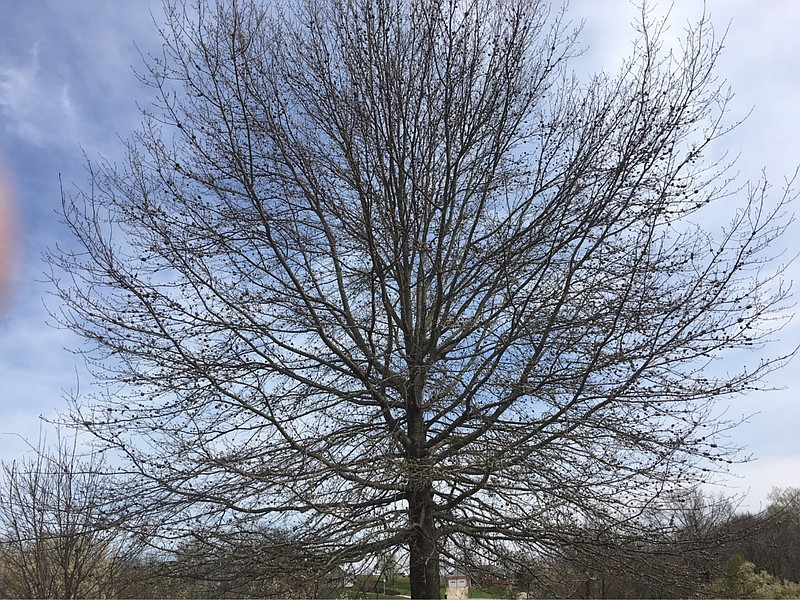Q: I know these growths on my tree are caused by some little bug, but is it hurting my tree and will they ever go away? They are especially bad on one of three pin oaks.
A: Tiny wasps of two species cause horned and gouty oak gall. It takes three years for the galls to get to full size and there is a bit of variation on the mature size of different galls. Now, contemplate that once formed, they don't go away so you can see these "dried or dead" galls for years to come. The branch size increasing to the point that it is similar in size to the gall would make them to be less apparent. It is unknown when they will lessen, but a forest pathologist with Missouri Department of Conservation reports these unsightly growths seem to be "bad" in the Central Missouri area, starting last year.
They rarely kill a tree, especially if it isn't small. If the branches don't die past the point of the gall then it is less harmful. Doing things to maintain good tree health is about all you can do. Take a soil test to see if your pH or major nutrients need to be adjusted, establish a large mulch ring around the tree and water during extended hot/dry spells. There is a good publication about this from Kentucky and available at entomology.ca.uky.edu/ef457.
Q: I am interested in a couple of novelty trees. One is Royal Empress and the other is the monkey puzzle tree. Can I grow them here, especially the Royal Empress?
A: Paulownia tomentosa, commonly called royal paulownia, empress tree or princess tree, is native to China. It grows very fast and handles a wide range of conditions, including drought. However, Missouri Botanical Garden warns against heavy clay soil and windy sites. It is prized for its stunning light purple spring flowers, which have a lovely fragrance and benefit some pollinators. There are cultivars that are sterile, which helps to offset a major detraction, that it can be invasive. It is listed as invasive in Kentucky, Tennessee, Wisconsin, Alabama, Georgia, South Carolina and Connecticut, You might have to check around with some local nurseries to find one, as it isn't commonly available.
Araucaria araucana, commonly called monkey puzzle tree or Chilean pine, is an evergreen conifer that is also the national tree of Chile. It is hardy in zones seven-10, so wouldn't likely be successful here, even in a protected location. It grows 50 feet or taller. One could grow in a pot for some time. Keep in a sunny window in the winter and water sparingly. It would eventually get too big to handle, but has interesting foliage and form while it was small enough to handle.
Q: When is the Master Gardener plant sale? Is it at the same place?
A: It starts at 7 a.m. May 5, at the Jefferson City Jaycees Fairgrounds. The proceeds from the plant sale go back into the Master Gardener projects. Beautiful plants will fill the main building of the fairgrounds but they sell quickly. It ends at noon.
Q: When is the best time in the spring to spray for dandelions?
A: When you can find them, which is when they are flowering. Spraying them with a typical lawn herbicide should be fairly effective anytime from April through June. Including a few drops of dish soap may improve the performance; add the soap after putting the water in the spray tank to prevent excessive foaming. Herbicides work better on weeds when they are growing quickly, which dandelions should be now. That said, killing perennial weeds is considered better in the fall, as the plants draw in the chemical(s) to the roots better. Finding dandelions in the fall is harder, though. A good strategy in the spring is to survey and spot spry twice, about three to four weeks apart. Sprays if applied right should be more effective than granular "weed and feed" type products. Read the label and follow instructions.

